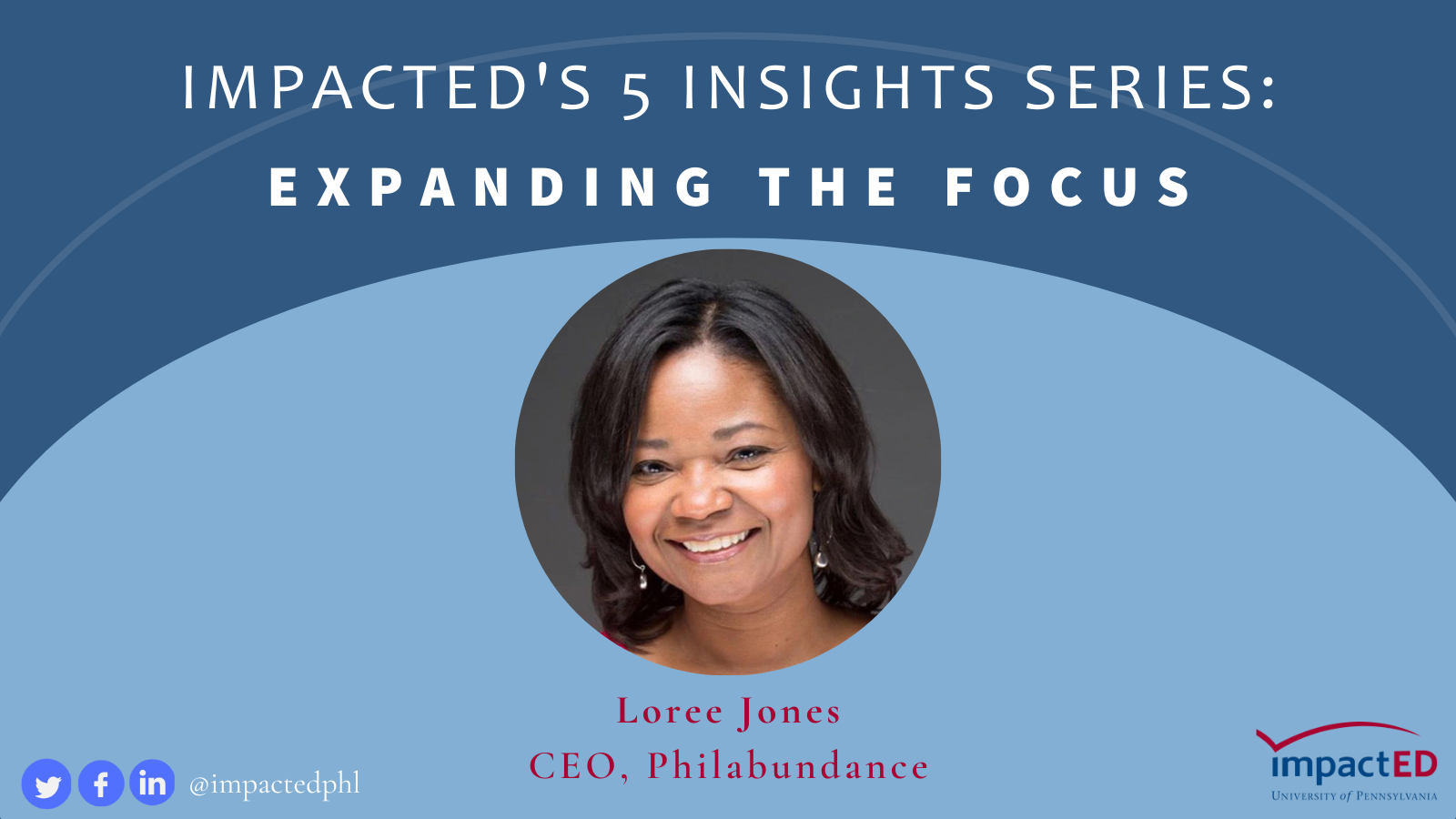
“Philabundance is focused not only on relieving the hunger we see today, but also on striving to end hunger for good. The support provided with ImpactED has helped us to lay the groundwork for how we approach and measure this work, ensuring we are working in partnership with the communities we serve.”
Loree Jones
Chief Executive Officer, Philabundance
Organizations responding to basic needs like food access, education, and healthcare have experienced surging need in the economic aftermath of the pandemic. To adjust, some organizations have had to deepen the services they offer their existing community, while others expanded their reach to serve new populations. Many have responded by expanding their focus beyond direct service to work toward change at the systemic level.
One of our partners, Philabundance, has been at the forefront of this type of change: expanding the focus. As Loree Jones, their CEO shared, “Philabundance is focused not only on relieving the hunger we see today, but also on striving to end hunger for good.” In 2020 alone, they partnered with local organizations, health care, schools, and community groups to distribute 55 million pounds of food, which was 60% more than the prior year. At the same time, they developed a bold new strategy, Ending Hunger For Good, that allowed the organization, through collaboration, to focus on the cycle of no-win decisions too many are faced with daily: Do I buy food or medicine? Heat or eat? Pay for lunch or a bus pass?
To anchor their strategy, Philabundance developed a new organizational theory of change (TOC). A TOC is a strategic blueprint that outlines the ultimate change an organization is seeking to achieve and all the conditions that are needed to bring about that desired change. Developing an organizational TOC requires deepening your understanding of the problem you’re trying to solve, clarifying the intended impact you seek, and ensuring your programs and services are responsive to the needs and goals of those you serve.
Below are 3 important tips to keep in mind when starting the theory of change process:
- Consider your purpose. For more than 35 years, Philabundance focused on providing emergency food in order to relieve hunger in five counties in PA and four counties in NJ. While this is important work, it doesn’t ensure that the same people aren’t hungry again tomorrow or in the future. So, they expanded their work by pursuing a bold new strategy to help End Hunger For Good. Ask yourself: What impact will your organization hold itself accountable to over the long term and why does this matter?
- Identify the individuals and communities who are at the center of your work. To create their theory of change, Philabundance centered the experiences of the communities they served and worked to understand their more holistic needs. They learned that individuals were wrestling with spending tradeoffs between food and other necessities that perpetuated food insecurity. Ask yourself: how is your approach informed by the needs and voices of the individuals and communities you serve?
- Explore the scope, nature, and extent of the problem. To address the systemic challenges facing the communities they serve, Philabundance is partnering with community organizations across the region to provide food plus education, financial literacy, health services, housing, and job training/workforce development. Ask yourself: What part(s) of the problem are you working to address and how can you work collaboratively with others? How does your approach account for the structural issues that have shaped the experiences of the community you serve?
ImpactED has helped dozens of organizations like Philabundance develop or refine an existing organizational theory of change (TOC). Below are 3 tools to support your organization in getting started:
- Theory of Change Overview Guide - This resource provides an overview of how to approach developing a TOC to clarify your organization’s desired impact and create a blueprint for achieving it.
- Intended Impact & Theory of Change Overview - This resource provides an overview of the theory of change process and organizational examples of how this has been put into practice.
- Constructing a Racial Equity Theory of Change - This resource helps those who want to take deliberate steps toward ending persistent racial outcome disparities in their particular context.
We want to hear from you! How is your organization thinking about expanding your focus to work toward systemic change? Email or tag us on social media to share your perspectives and learnings.
*This blog post is a part of our 5 Insight Series. Each month we’ll be diving deeper into one insight from our 5 Insights for Accelerating Social Change and sharing additional examples and actionable strategies to support you and your organization. If your organization is wrestling with similar issues and interested in partnering with ImpactED, please reach out to us at impact-ed@sas.upenn.edu.



